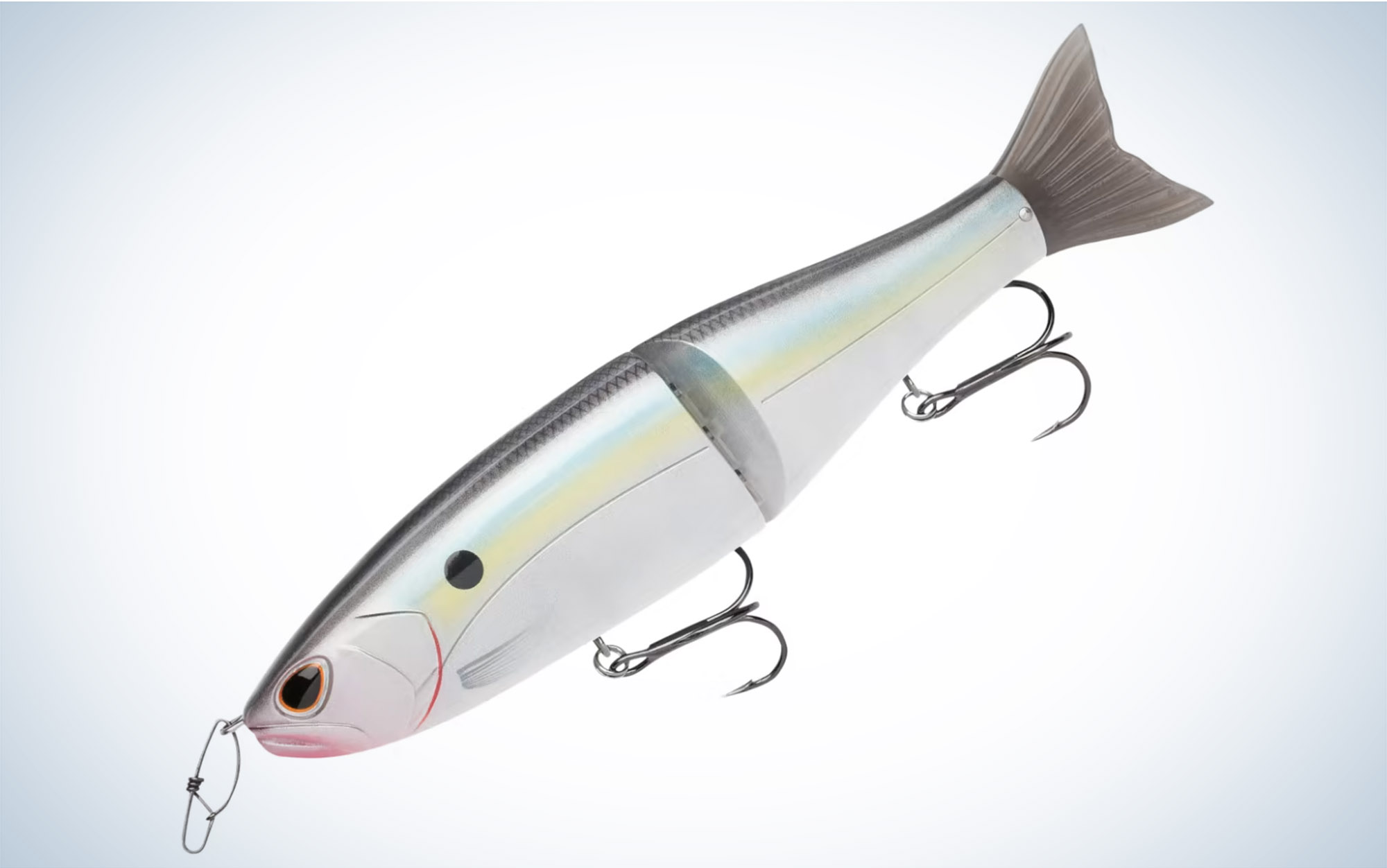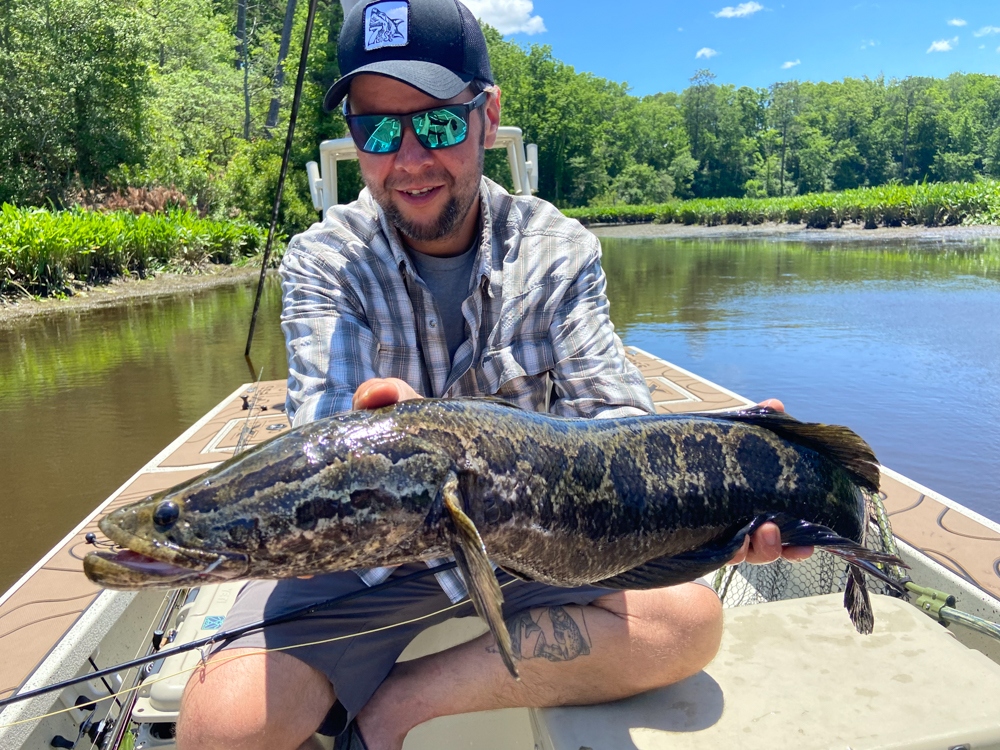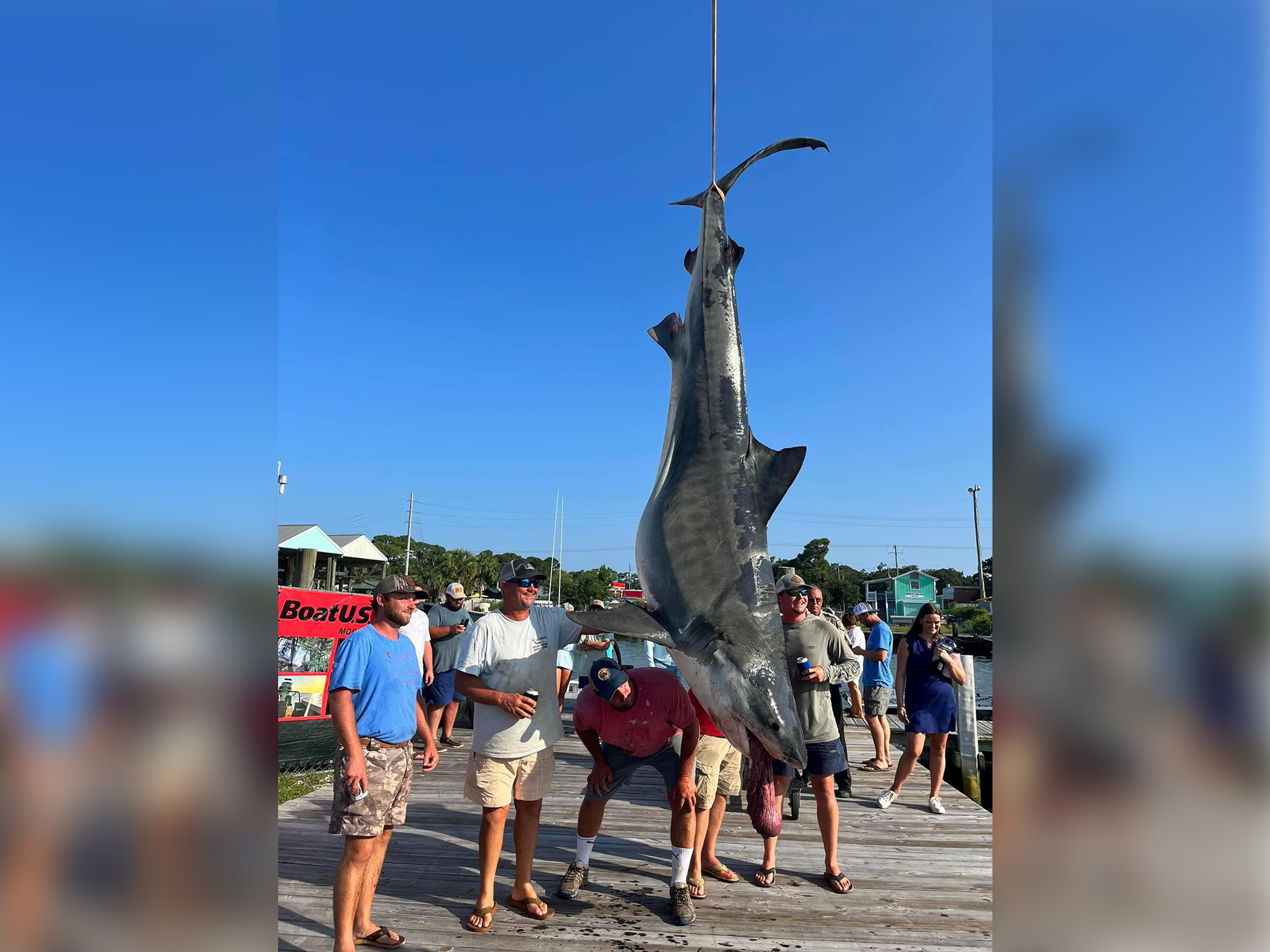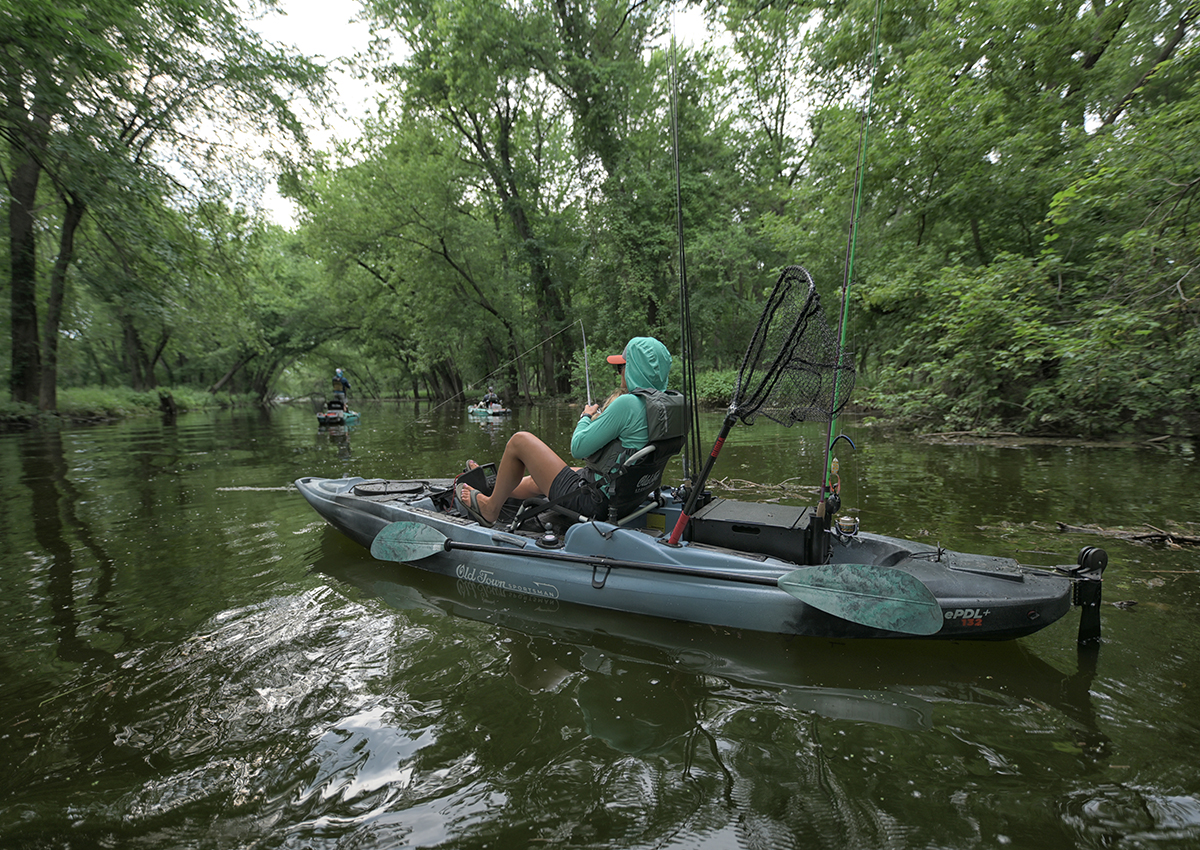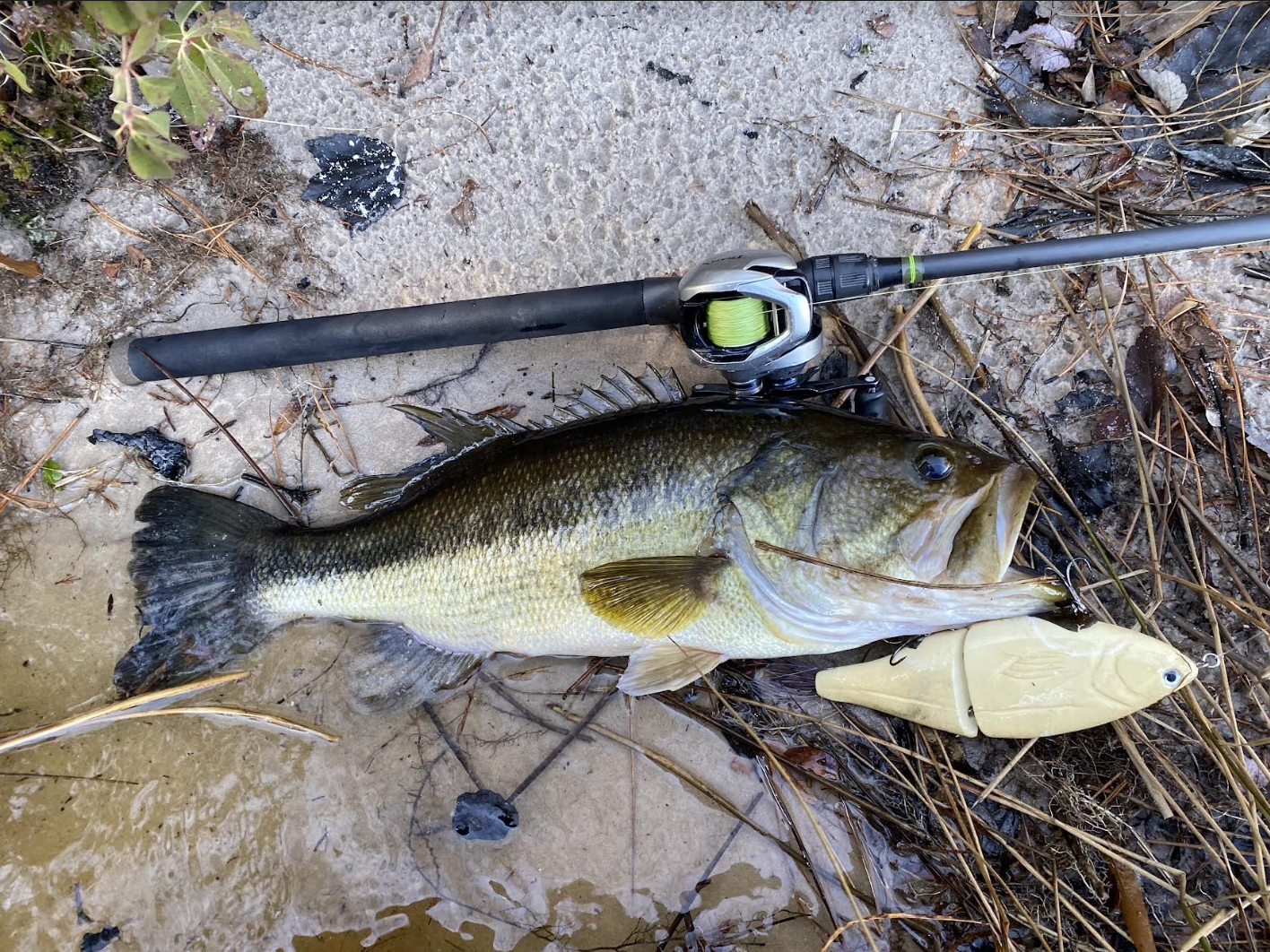
We may earn revenue from the products available on this page and participate in affiliate programs. Learn More ›
Ask a serious bass angler how to catch a true trophy largemouth, and there’s a strong possibility that glide baits are going to come up. These large and jointed hard lures represent mammoth prey like shad, trout, and juvenile carp.
Between production models found in tackle shops and custom lures handmade by independent builders, glide baits for bass are available in a plethora of shapes, sizes, and patterns. What they all have in common is their action—underwater, they gently glide from side to side in a wide, sweeping pattern, which beautifully mimics a carefree or injured target. In other words, it looks like an easy meal for a big, lazy bass. It’s fair to say that glide baits are one of the trendiest lures in bass fishing right now, except there’s really nothing new about them.
Best Glide Baits for Bass
- 6th Sense’s Flow Glide
- Livingston’s Viper
- Storm’s Arashi
- Black Talon Custom: The Donk
The Rise of Glide Baits
Glide baits have existed for decades in the muskie world. However those old muskie lures usually have wooden bodies and rounder shapes and look vastly different from the glide baits for bass that we see today. The second coming of these lures started in Japan in the early 2000s. To outsmart the huge bass in places like Lake Biwa (which would eventually cough up the current world-record largemouth), anglers began removing the lips of their large swimbaits and tinkering with the internal weights to make the lures suspend and glide through the water. This category of lure has come a long way since then. Glide baits were once in high demand, but now there are easily attainable glide baits made by a handful of companies. But before you can harness the power of the glider, there are some things you need to know. Here are some key tips for catching bass with glide baits.
Read Next: Best Swimbaits for Bass
Fish a Glide Bait Slowly
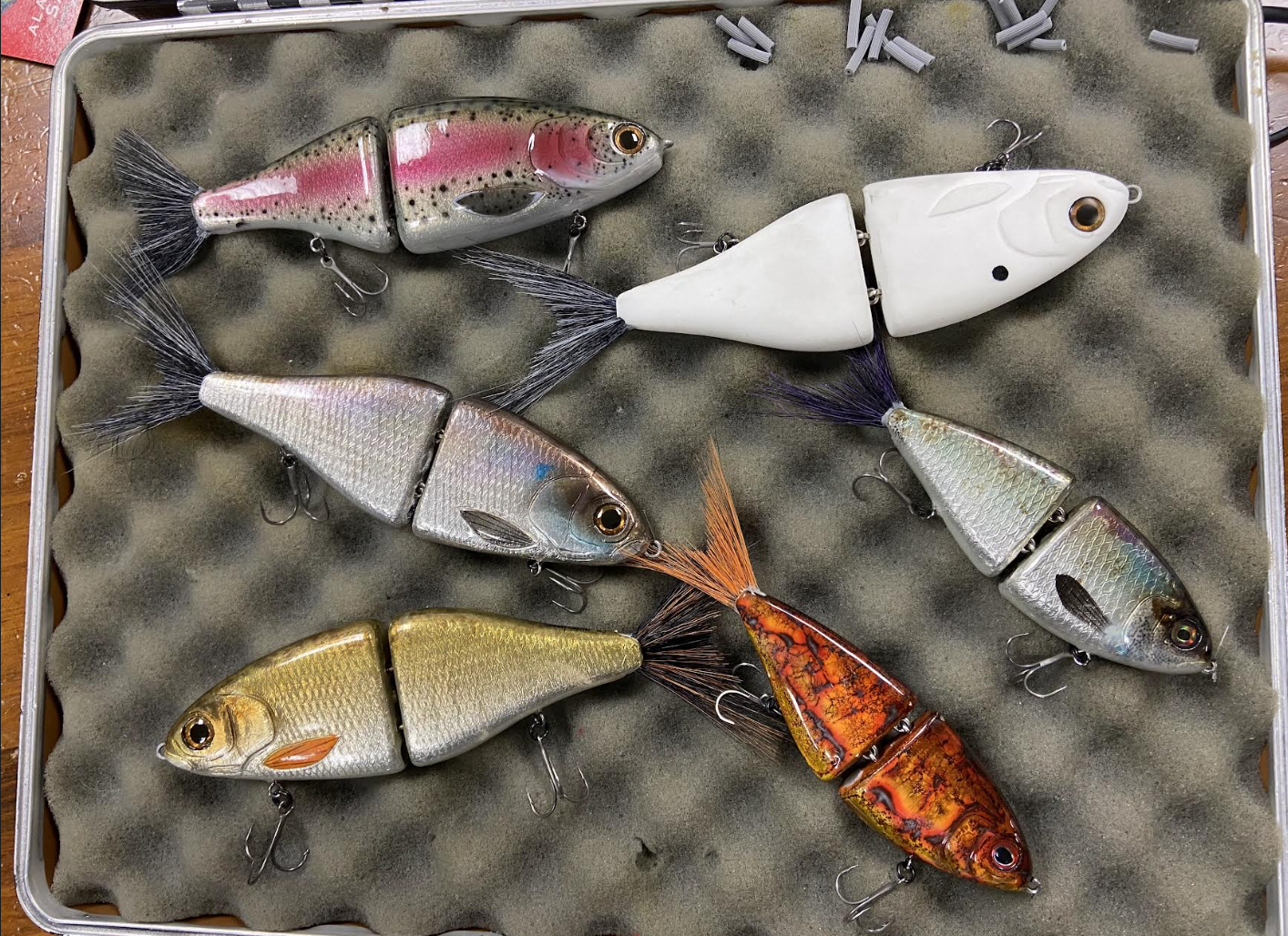
I recently had a chance to hang out with Keith Thomas, the man behind Pennsylvania-based Black Talon Custom Lures. His glide bait, the Donk, is one of the most coveted glide baits on the market, if you can even call it “on the market.” To score one, you must be one of the first few people to comment when Thomas posts a bait drop on his Facebook page. If you get in, you’re paying north of $200 for one of these small-batch baits. According to Thomas, there are people who have been trying for years. So, what sets the Donk apart? It’s the attention to detail that comes with artisan craftsmanship and the lure’s ability to suspend in the water column. It’s this suspension that makes the Donk so lethal, but Thomas says that fact often falls on deaf ears.
“People tend to want to overwork a glide bait,” he tells me. “They want to see it darting from side to side in these big, wide, sweeps. I’m not saying that won’t trigger aggressive fish, but the reality is that most of the biggest bass I’ve caught on a glide bait hit when the bait was doing absolutely nothing.”
Utilize a Glide Bait’s Versatility
Glide baits are versatile. Point the rod tip at the water and reel in short, fast bursts and the lure kicks back and forth quickly and erratically, an action known as “chopping.” Reel slowly, imparting gentle downward strokes of the rod tip, and the lure should softly glide to and fro. But what separates a good glide bait from a great glide bait is its ability to sink so slowly that it’s barely falling at all, and its ability to twitch, jackknife, and quiver ever so slightly with the lightest movement of the rod tip.
To use Thomas’s analogy, if you’re a big guy sitting on the couch and a meal you crave is being presented by a five-year-old that’s running all over the place, there’s a strong chance you’re not making the effort to chase it down. Conversely, if your meal is being carried on the back of a tortoise, you know you can catch it and are more likely to make the move. A great glide bait is arguably the most likely bass lure to get smashed by a wary, 5-plus-pound fish when it’s inactive.
Find Affordable Glide Baits
STORM Arashi Glide Bait
STORM
Customs like the Donk are coveted for their slow sink rates and ability to be finessed, but you don’t have to spend hundreds of dollars to hook up. Glide Baits like 6th Sense’s Flow Glide, Livingston’s Viper, and Storm’s Arashi are all affordable and capable of putting up your personal-best bass if, that is, you know when to cast them.
Fish Glide Baits in Spring and Fall
Another hang up Thomas has noticed with folks just getting into throwing glide baits is that they want to use them all season long. Their productivity throughout the season will, of course, vary by region, but as a rule, glide baits are most productive during the spring and late winter pre-spawn months for several reasons.
Most notably, pre-spawn times for largemouth tend to coincide with movements or an abundance of large forage. As an example, in the Northeast where Thomas fishes, gizzard shad are schooled up in spring and the heaviest bass craving big, protein-packed meals, are tuned into them. In general, cooler water temperatures make large bass more apt to target and chase down larger meals, making glide baits shine early and late in the year. Similar to shad movements, many West Coast lakes are stocked with fresh trout in spring, and glide baits match them perfectly. However, Thomas hears from people looking for advice on using his lures in summer, and his answer isn’t always what they want to hear.
“If I’m going to throw a glide bait in the heat of summer, I’m only doing it during a specific window,” he says. “In the spring I know that bait can produce at any time of day, but in summer, I’m looking for movement in and above the water … It takes some experience to recognize, but during those windows I might get a bass to move on a glider.”
Thomas also pointed out that considering these lures have two big treble hooks hanging off of them, they’re not exactly weedless. As milfoil and lilies grow, and as algae and duckweed bloom in the heat, glide baits can become difficult to work.
But when glide baits are able to run clean early in the spring or in the fall, they can score you the biggest largemouth of your life while most bass anglers are couch tripping.
